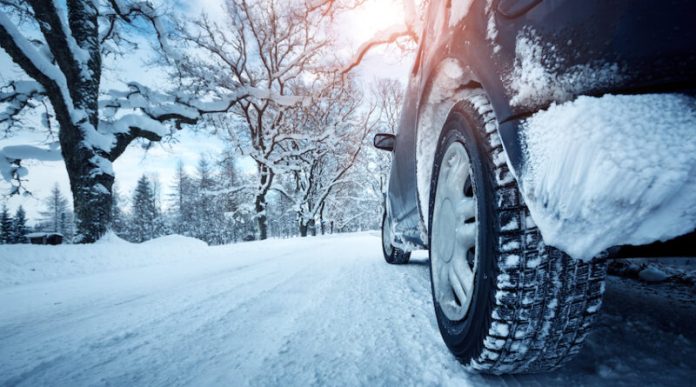Snow mode, also known as winter mode, is a feature equipped with many modern Internal Combustion Engine (ICE) cars and Electric Vehicles (EVs) to enhance traction and stability in slippery or snowy conditions. Snow mode adjusts various vehicle systems, such as traction control, throttle response, transmission shift points, and sometimes suspension settings.
The specific functionality can vary between ICE cars and EVs, but the general purpose is to optimize the vehicle’s performance in adverse weather conditions.
A:Snow Mode in ICE Cars:
- Traction Control:
- Snow mode often adjusts the vehicle’s traction control system. Traction control helps prevent wheel spin during acceleration by reducing engine power or applying brakes to specific wheels. In snow mode, the traction control system may be less aggressive to allow for a certain amount of wheel slip, which can help prevent wheels from spinning excessively on slippery surfaces like snow or ice, allowing the vehicle to maintain traction and move forward more effectively.
- Stability Control:
- In addition to traction control, snow mode may also adjust the vehicle’s stability control system to help maintain stability during cornering and sudden maneuvers on slippery surfaces. Stability control systems are designed to prevent skidding and loss of control. In snow mode, the stability control system may be adjusted to be less intrusive, allowing for more freedom of movement in situations where some wheel slip is acceptable.
- Throttle Response:
Snow mode alters the throttle response sensitivity. Making throttle less sensitive to inputs, helps to prevent rapid acceleration that could lead to wheel spin on slippery surfaces. This helps drivers maintain smoother acceleration, reducing the likelihood of wheel spin on slippery surfaces.
- Transmission Settings:
- Some vehicles with automatic transmissions have different shift patterns in snow mode. The transmission may start in a higher gear to minimize wheel spin during acceleration and the transmission’s shift points keep the vehicle in lower gears for longer, which can provide better traction and control in slippery conditions.
- Anti-Lock Braking System (ABS):
- Some snow modes may adjust the braking system to provide more gradual and controlled braking, reducing the risk of skidding on icy or snowy roads. Snow mode might also affect the ABS, which prevents wheel lockup during hard braking. The ABS in snow mode may be tuned to allow for a bit more wheel slip to optimize braking performance on slippery surfaces.
- Steering: In some advanced systems, snow mode may also adjust the steering response to provide better control and stability in snow or ice.
A: Snow Mode in EV Cars: In Electric Vehicles (EVs), the “snow mode” or “winter mode” is a feature designed to optimize the vehicle’s performance and handling in snowy or slippery conditions. While the specific functionalities can vary between different EV models and manufacturers, here are some common features associated with snow mode in electric vehicles:
- Traction Control: Snow mode often adjusts the traction control system to provide a better grip on slippery surfaces. This may involve fine-tuning the power delivery to each wheel to prevent wheel spin and improve overall traction.
- Regenerative Braking: Some BEVs use regenerative braking to capture and store energy during deceleration. In snow mode, regenerative braking might be adjusted to be less aggressive to avoid wheel lock-up and maintain better control on icy or snowy roads.Regenerative braking captures energy during deceleration, but in snowy conditions, the system might be tuned to provide smoother and more predictable braking to avoid skidding.
- Power Delivery: Snow mode may modify how power is delivered to the wheels. It might optimize torque distribution between the front and rear axles to enhance stability and traction, especially in situations where one set of wheels may be slipping.
- Throttle Response: The sensitivity of the accelerator pedal (throttle response) may be altered in snow mode to prevent sudden acceleration, providing better control on slippery surfaces.
- Battery Management: In extremely cold conditions, maintaining the optimal temperature of the battery is crucial for performance. Snow mode may adjust the thermal management system to ensure that the battery operates efficiently in low temperatures.Snow mode may also affect the heating systems in the vehicle. It could prioritize warming up critical components, such as the battery, more quickly to ensure optimal performance in cold weather.
- Stability Control: Some EVs have stability control systems that can be adjusted in snow mode. These systems may intervene to help the driver maintain control by selectively applying brakes to individual wheels or adjusting power delivery.
- User Interface: In addition to the technical adjustments, snow mode may change the information displayed on the vehicle’s dashboard, providing feedback to the driver about road conditions and the status of various systems.
Summary:
ICE Vehicles: Specific features and behaviors associated with snow mode can vary between vehicles, depending on the vehicle make and model. Some vehicles may have a dedicated “Snow” mode, while others may incorporate these adjustments as part of a broader “Drive Mode” system that includes settings for different driving conditions (e.g., Normal, Eco, Sport, and Snow). Additionally, newer vehicles with advanced electronic stability control systems may automatically adjust various parameters based on sensors detecting slippery conditions, even without the driver manually selecting a snow mode.
EV Vehicles: It’s important to note that the availability and functionality of snow mode can vary, and not all EVs have a dedicated snow mode. Drivers should refer to the vehicle’s manual or consult with the manufacturer to understand how the snow mode operates in their specific EV model.
This exclusive article has been published in Automark Magazine’s March-2024 printed edition.
